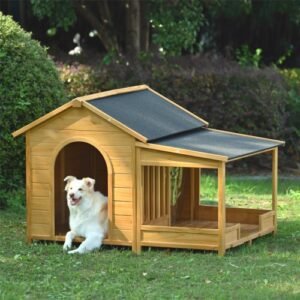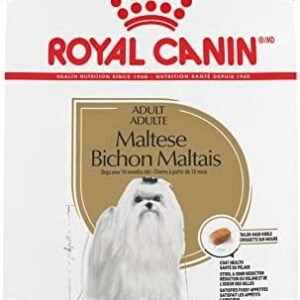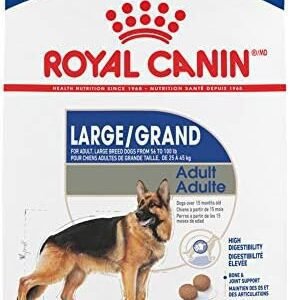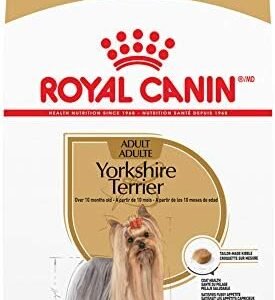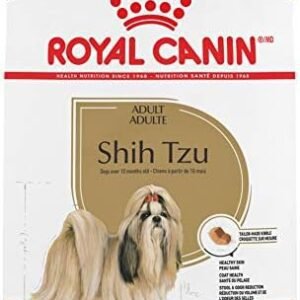Picture this on a hot summer’s day – you’re savoring a delicious popsicle, relishing the icy refreshment, and pondering if your faithful canine companion could join in the frozen fun. Popsicles are a beloved human treat, a symbol of summer, and a delicious way to beat the heat. But can your furry friend partake in this icy indulgence too?
As pet owners, we often encounter moments when our dogs’ longing eyes plead for a taste of what we’re enjoying. Yet, their well-being and health are of utmost importance. This leads us to a crucial question: Can dogs eat popsicles? Is it safe for them to indulge in this frozen delight?
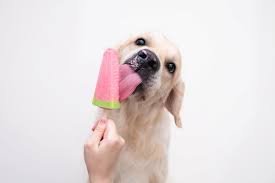
In this article, we embark on a journey to explore the world of popsicles and our canine companions. We’ll answer the pivotal question of whether dogs can enjoy popsicles, and we’ll delve into the pros and cons of introducing this frosty treat into their diets. But that’s not all – we’ll also discuss the dos and don’ts, offering guidance on how much is too much and what to do if your dog happens to nibble on a part of a popsicle that isn’t edible or safe for dogs. Get ready to uncover the cool canine treat dilemma and ensure your dog’s summer is not only refreshing but also safe and enjoyable.
Table of Contents
Can Dogs Enjoy the Cool Bliss of Popsicles?
The prospect of sharing a popsicle with your four-legged companion on a sweltering day is undoubtedly enticing. The good news is that, for the most part, popsicles are not inherently toxic or dangerous to dogs. Some dogs may even relish the icy delight and find it a refreshing treat, especially during hot weather. But before we delve deeper into this delectable world of canine cravings, let’s explore the nutritional aspects of popsicles and decipher whether they can offer any benefits to our furry friends.
Nutrition Facts for Popsicles

| Nutrient | Amount per Serving |
|---|---|
| Calories | 40-80calories |
| Protein | 0-1 grams |
| Carbohydrates | 10-20 grams |
| Dietary Fiber | 0-2 grams |
| Sugars | 8-15 grams |
| Fat | 0 grams |
| Vitamins | A, C, E |
| Minerals | Calcium, Phosphorus |
Popsicles do provide a smattering of vitamins and minerals that can be beneficial for dogs. For instance, they contain vitamin C, which supports your dog’s immune system, and vitamin A, crucial for their vision and skin health. Additionally, the presence of dietary fiber can contribute to a healthy digestive system.
However, like many indulgent treats, popsicles also come with their share of drawbacks when it comes to canine consumption. The high sugar content in most popsicles can be a cause for concern, especially if fed in excess. Excessive sugar intake can lead to a myriad of health issues, including obesity, dental problems, and even diabetes in the long run.
Moreover, the fat content in certain popsicles can be concerning, as it may not align with a dog’s dietary requirements. Dogs need a specific balance of nutrients to maintain their overall health, and a diet high in sugary or fatty treats can disrupt this equilibrium.
To put it succinctly, while popsicles aren’t inherently toxic, they should be viewed as an occasional and mindful treat for your dog, rather than a regular dietary component. They should complement, not replace, your dog’s primary diet, which should consist of nutritionally balanced dog food that meets their specific needs.
In the following sections, we will navigate through the various aspects of offering popsicles to your dog – from the safe ways to do so to the potential risks and alternatives. By the end, you’ll be well-equipped to make an informed decision about whether to share a popsicle with your furry friend on a hot summer day.
The Art of Moderation: Serving Popsicles to Your Pup
Balancing the Cool Indulgence
So, you’ve decided to share the joy of a popsicle with your canine companion. Now comes the vital question – how much popsicles can a dog eat? The key to a successful and safe popsicle treat for your furry friend lies in moderation and mindful portions.
Moderation is Key
The golden rule when it comes to feeding popsicles to your dog is moderation. Treats, including popsicles, should account for no more than 10% of your dog’s daily calorie intake. This ensures that they continue to receive the essential nutrients from their primary dog food while enjoying the occasional indulgence.
Start Small and Observe
Before diving into the world of popsicle sharing, it’s advisable to start with a small piece and carefully observe how your dog reacts. Not all dogs may take to popsicles, and some may have sensitivities to certain ingredients or flavors. A small initial portion allows you to gauge their response without overindulging them.
Preparation Matters
How you prepare the popsicle for your dog matters. It’s essential to opt for popsicles that are free from artificial sweeteners like xylitol, which can be toxic to dogs. Ideally, you should choose popsicles with minimal added sugars and natural flavors. Homemade popsicles using dog-safe ingredients are an excellent choice, as they allow you to control the ingredients and quality.
Consider Your Dog’s Size and Breed
The size and breed of your dog can influence how much popsicle they can tolerate. Larger dogs generally have a higher capacity to handle treats like popsicles compared to smaller dogs. It’s crucial to tailor the serving size based on your dog’s weight and individual characteristics. Keep in mind that a large dog may be able to enjoy more of a popsicle without any problem, while a smaller dog should receive a smaller portion.
Appropriate Serving Sizes
To provide you with a general guideline, here are some recommended serving sizes of popsicles based on a dog’s weight:
- Small dogs (up to 20 pounds): Half of a small popsicle or a small portion of a regular-sized popsicle.
- Medium dogs (20-50 pounds): A portion equivalent to one-third to half of a regular-sized popsicle.
- Large dogs (50+ pounds): A portion equivalent to half to a full regular-sized popsicle.
Keep in mind that these are approximate recommendations and should be adjusted based on your dog’s individual needs and tolerance. It’s always a good idea to consult with your veterinarian to determine the most suitable serving size for your specific dog.
In the following sections, we will further explore the potential risks of feeding popsicles to your dog, including the hazards associated with specific ingredients and how to ensure a safe and enjoyable experience for your pup. Your dog’s well-being is our top priority, and we’re here to guide you in making informed choices when it comes to this delectable icy delight.
Navigating the Risks: Popsicles and Your Canine Companion
Understanding the Perils of Popsicles
While the prospect of sharing a popsicle with your dog may seem delightful, it’s imperative to be aware of the potential risks associated with feeding these frosty treats to your furry friend. In this section, we’ll address the various risks and hazards related to serving popsicles to dogs.
Food Allergies in Dogs
One of the primary risks when feeding popsicles to dogs is the possibility of food allergies. Dogs, like humans, can develop allergies to various food ingredients. Popsicles often contain a range of flavors, colors, and additives, some of which can trigger allergic reactions in sensitive dogs. Common allergens in popsicles may include dairy, certain fruits, and artificial additives.
Short-Term Signs of Food Intolerance
Food intolerance can manifest as short-term signs of discomfort and distress in dogs. Gastrointestinal distress is a common outcome when dogs consume foods that do not agree with their digestive system. Signs of food intolerance may include vomiting, diarrhea, excessive gas, and abdominal discomfort. If your dog exhibits any of these symptoms after consuming a popsicle, it’s essential to discontinue the treat and consult with your veterinarian.
Hazardous Components in Popsicles
Popsicles can harbor various components that pose potential hazards to dogs. Some of these hazards include:
Xylitol: An artificial sweetener often used in sugar-free popsicles, xylitol is highly toxic to dogs. Ingesting even small amounts of xylitol can lead to severe complications, including hypoglycemia (low blood sugar) and liver damage.
Artificial Colors and Flavors: Many popsicles contain artificial colors and flavors, which can be problematic for dogs with sensitivities. Some dogs may experience adverse reactions to these additives, including skin irritations and gastrointestinal issues.
High Sugar Content: Popsicles are often laden with sugar, which can contribute to obesity, dental problems, and long-term health issues in dogs if consumed excessively.
Allergic Reactions
If your dog is prone to allergies or sensitivities, it’s crucial to monitor them closely for signs of allergic reactions after eating popsicles. Allergic reactions can manifest as itchy skin, redness or irritation, swelling (particularly around the face and neck), excessive drooling, and lethargy. If you suspect that your dog is experiencing an allergic reaction, seek immediate veterinary attention.
Specific Issues with Popsicles
Apart from the aforementioned risks, popsicles may present specific issues for dogs. These include the risk of brain freeze, especially if your dog eagerly devours a frozen treat. While not a severe hazard, brain freeze can cause discomfort and confusion in dogs.
Signs and Symptoms of Adverse Reactions
To ensure the safety and well-being of your dog, it’s essential to be vigilant for signs and symptoms of adverse reactions after consuming popsicles. These may include:
- Vomiting
- Diarrhea
- Abdominal pain
- Lethargy
- Excessive drooling
- Swelling, particularly around the face and neck
- Skin irritations
- Behavioral changes
If you notice any of these signs, it’s crucial to discontinue popsicle treats and consult with your veterinarian promptly. Your dog’s health is paramount, and understanding the potential risks associated with popsicles can help you make informed choices and ensure their safety.
In the upcoming sections, we will explore the ways to make the popsicle experience safe and enjoyable for your dog, as well as offer alternatives to consider for a delightful treat that aligns with your dog’s dietary needs and preferences.
Enhancing the Canine Culinary Experience: Popsicles Done Right
Creating Cool Canine Moments

Now that we’ve delved into the intricacies of feeding popsicles to dogs and the associated risks, it’s time to explore how to make the experience enjoyable, safe, and wholesome for your furry friend. In this section, we’ll uncover the art of feeding popsicles to your dog and elevating their dining experience to new heights.
Ways to Feed Popsicles to Your Dog
Popsicles can be served to your dog in various creative ways, each adding a touch of novelty to their culinary experience:
Fresh or Frozen Treat: The simplest way to introduce popsicles to your dog is as a refreshing frozen treat. You can offer them a small portion of a popsicle, which they can lick or nibble on to cool down on a hot day.
Food Topper or Mixer: Popsicles can be incorporated into your dog’s regular meals as a flavorful food topper or mixer. Simply break a small piece of the popsicle and mix it with their kibble to add a burst of flavor.
Homemade Treats or Snacks: Get creative in the kitchen by using popsicles as an ingredient to craft homemade dog treats or snacks. We’ll share some delightful recipes and ideas shortly.
Enhancing Your Dog’s Dining Experience
The introduction of popsicles into your dog’s diet can open doors to enhancing their dining experience. Here are some insights into how you can make your dog’s meals more appealing and flavorful:
Variety is Key: Offer a variety of popsicle flavors to keep things exciting for your dog. Fruit-based popsicles with dog-safe ingredients can be an excellent choice. Just remember to check the ingredient list for any potential allergens or harmful components.
Texture and Temperature: Experiment with the texture and temperature of popsicles. Some dogs may prefer softer, slushy popsicles, while others may enjoy the challenge of nibbling on a frozen one. Tailor the popsicle to suit your dog’s preferences.
Serve in Dog-Friendly Dishes: Use dog-friendly serving dishes or puzzle toys that can hold pieces of popsicle. These can make the eating process more engaging and mentally stimulating for your dog.
- Watch for Brain Freeze: Be mindful of the potential for brain freeze, especially if your dog is eager to devour a frozen treat. If you notice signs of discomfort, slow down the pace and offer smaller portions.
Homemade Treats and Snacks
Creating homemade dog treats and snacks with popsicles is not only fun but also allows you to control the ingredients and ensure the safety of the treats. Here are some recipes and ideas to spark your culinary creativity:
Fruity Popsicle Treats: Combine dog-safe fruits like bananas and strawberries with water or yogurt to create popsicle treats. Freeze them in silicone molds for easy removal.
Chicken Broth Popsicles: Mix low-sodium chicken broth with water and freeze it in ice cube trays. These savory popsicles can be a delightful occasional treat.
Peanut Butter Popsicles: Create a mixture of dog-safe peanut butter and mashed bananas, then freeze them for a delectable frozen delight.
- Yogurt and Berry Popsicles: Blend plain yogurt with blueberries and a touch of honey. Freeze the mixture for a tasty, antioxidant-rich popsicle.
Remember to use dog-safe ingredients and avoid any known allergens when preparing homemade treats. Always monitor your dog while they enjoy these delightful creations, and adjust the portion size to match their dietary needs.
In the upcoming sections, we’ll discuss alternatives to popsicles that can provide safe and healthy treats for your dog, as well as answer common questions related to this cool canine delight.
FAQs Unveiled
Your Top 10 Questions About Popsicles for Dogs, Answered
As we navigate the world of popsicles for dogs, it’s only natural that you may have lingering questions. In this section, we’ll address the most frequently asked questions about this frozen treat and your canine companion.
1. Can dogs eat any type of popsicle?
Not all popsicles are created equal, and not all are safe for dogs. Popsicles made with dog-safe ingredients like fruits, yogurt, or low-sodium broth are generally safe. However, popsicles containing artificial sweeteners, high sugar content, or harmful components like xylitol should be avoided.
2. How can I tell if a popsicle is safe for my dog?
Always check the ingredient list of the popsicle to ensure it does not contain any harmful substances like xylitol. Look for natural and dog-safe ingredients. If you’re unsure, consult with your veterinarian.
3. Can I give popsicles to puppies?
Puppies have delicate digestive systems, and their tolerance for new foods may vary. It’s best to introduce popsicles to puppies gradually and in small portions. Ensure the popsicle is free from harmful ingredients and monitor your puppy for any adverse reactions.
4. Are there any specific popsicle flavors that are better for dogs?
Fruit-based popsicles with dog-safe fruits like bananas, strawberries, and blueberries are excellent choices. Avoid popsicles with artificial flavors or components that could trigger allergies or sensitivities.
5. Can popsicles help my dog cool down on a hot day?
Yes, popsicles can be a refreshing treat for dogs on hot days. The cool sensation can help them beat the heat, but it’s essential to ensure that the popsicle is safe and free from harmful components.
6. Can popsicles be used as a reward for training my dog?
Popsicles can be used as a special reward during training sessions, but it’s crucial to break them into small portions to avoid overindulgence. Additionally, use popsicles as an occasional treat rather than a primary training reward.
7. What are the signs of an allergic reaction to popsicles in dogs?
Signs of an allergic reaction can include itching, redness or irritation of the skin, swelling (particularly around the face and neck), excessive drooling, and behavioral changes. If you suspect an allergic reaction, consult with your veterinarian.
8. Can dogs get brain freeze from eating popsicles?
Yes, dogs can experience brain freeze if they consume popsicles too quickly. If you notice signs of discomfort or confusion, slow down the pace and offer smaller portions.
9. Are there alternatives to popsicles for dogs?
Certainly! There are various safe and healthy alternatives to popsicles for dogs, including plain ice cubes, frozen dog treats, and dog-safe fruits like watermelon and apples.
10. How often can I give my dog popsicles?
Popsicles should be given to dogs in moderation. They should not make up more than 10% of your dog’s daily calorie intake. The frequency of popsicle treats should be occasional to prevent any adverse effects.
As we wrap up this section, we’ve unraveled some of the most common queries about popsicles for dogs. In the final segment, we’ll conclude our exploration by summarizing the main points and providing tips for alternative treats that are safe and healthy for your furry friend. If you have more questions or would like to share your experiences, feel free to engage with us. Your dog’s well-being is our shared priority.
Serving a Delightful Canine Treat: Conclusion
In the course of our journey through the world of popsicles for dogs, we’ve uncovered a refreshing treat that, when enjoyed in moderation and with proper care, can bring joy to our four-legged friends. As we conclude our exploration, let’s recap the key takeaways and provide some valuable insights.
As you’ve learned, dogs can indeed enjoy popsicles as an occasional treat. However, it’s crucial to be aware of the potential risks and to limit their intake accordingly. Popsicles are not essential for your dog’s health and may cause more harm than good if fed excessively or improperly. So, remember the golden rule: moderation.
Now, if you’re looking for alternative treats that are safe and healthy for dogs, we have some suggestions for you. Consider offering your furry companion fresh, dog-safe fruits like watermelon, apples, or blueberries. These fruits are lower in sugar and acidity than popsicles and provide similar or even better nutritional benefits. Just be sure to remove any seeds or cores before serving them to your dog.
As you embark on your canine culinary adventures, we invite you to share your experiences and questions with us. Do you have any favorite dog-friendly treats or creative recipes to enhance your dog’s dining experience? We’d love to hear from you. Connect with us in the comment section below, and let’s continue our mission to keep our canine friends happy, healthy, and well-fed. Your insights and stories are a vital part of our community, and we look forward to hearing from you.




















